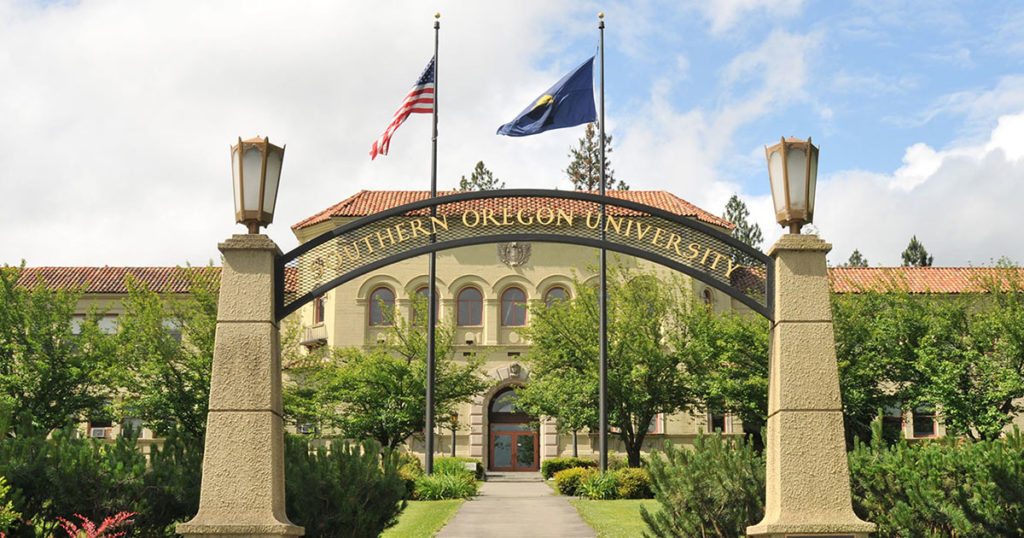Photo ©Southern Oregon University
As tuition and the student incidental fee continue to rise, the time has come to consider the impact of SOU’s rising costs. With anything as expensive as a college degree, there will always be people who are unable to afford it. At SOU, there are mechanisms in place to try and accommodate as many applicants as possible, such as the financial aid office, however these aren’t always enough. In fact, considering the ever rising fees to study at SOU, the time that the “average student” may not be able to afford SOU, is right around the corner.
Brysen Pedrina and Marc Camilo are two students who previously attended SOU, though are no longer, due to several reasons. Primarily, both Pedrina and Camilo cite the high cost of SOU as their biggest issue.
Pedrina, a pre-med student, and Camilo, a talented musician, were both awarded considerable amounts of financial aid due to their academic merit and potential. Despite this, they could not continue to afford SOU, without even considering the fee raises which have taken place since they left. High costs were not the only reasons for these two students to take their educations elsewhere; both mentioned problems with SOU’s administration.
For Brysen Pedrina, a Hawaiian native, receiving some of his financial aid was difficult. Pedrina had to petition to receive the financial aid he was due, which was not being alloted because of his out-of-state status. The only reason he was able to receive it, he says, is because he specifically cited his friend, another Hawaiian native and SOU attendee, who was awarded full financial aid. As Pedrina sees it, there wasn’t a reason to deny his financial aid, and attempting to find out why was rife with miscommunications and unhelpful replies from administrative staff. Furthermore, he said it felt as if, “No one seemed concerned I was leaving,” when he was looking at other options due to costs. “I wanted to be as debt free as possible, and SOU is not the way to go,” said Pedrina.
Marc Camilo’s situation, on the other hand, was less strenuous, though just as unhelpful. Camilo mentions some bureaucratic problems in SOU, but overall, said that it just “wasn’t enough”. Even with loans and financial aid, SOU was simply too expensive of a school for Camilo – especially considering that the education, while quite good overall, can be lacking in some areas, at the very least in his specific musical discipline. Despite similarities in their cases, neither Pedrina or Camilo have any concrete ideas. “It’s hard to say what can bring students in and make programs better,” said Camilo. That is the question, of course, though it’s quite difficult to answer: what can be done and about what exactly?
The arguments are clearly there on behalf of students – students which are effectively customers, for what is a college if not a business? Like all businesses, SOU must raise enough money to operate.
For Greg Perkinson, SOU’s Vice President of Finance and Administration, the value of a college degree is a “deeply personal question,” in the sense that every individual’s situation and outcome is different. Even beyond the boundaries of a Psychology or Digital Cinema degree versus an Engineering or Chemistry degree, Perkinson argues that for some, coming to a place like SOU is the right choice regardless of what they study and plan to do, but for others it will not be. It is of course mostly up to the individual to decide, although these days, there is much debate around the value of any college education, even more so when considering that the money used to earn one may be alternately used to start a small business, invest in stock options, property, or even purchase a home and support a family. At SOU, between the rising tuition fees, rising student incidental fee, parking permits, meal plans, rent, and even the cost of grocery shopping in Ashland, Perkinson agrees that if the total cost of being a student at SOU continues to rise, more and more people will be unable to afford it. While financial aid will “do everything they can”, even with $3 million to award to students, it simply won’t be possible to help everyone.
For SOU, the struggle to help incoming applicants afford a degree won’t be the only problem. The 2019-2020 school year has had one of the lowest enrollment rates at SOU, and the university is bleeding money across the board, demanding almost $2.4 million in budget cuts across the entire organization. As operating costs rise for SOU, the only way to offset this is to raise the cost for students. It is, simply, an unfortunate reality that the range of students and families that can afford SOU is shrinking, and there does not seem to be anything anyone can do about it. When asked what could be done, Perkinson suggested that students advocate and vote for free education. Concretely, however, and in the hands of the university which controls the costs, there isn’t really a good answer on what to do.
For the time being, SOU must offset rising operation costs onto students, but when the operation exists to bring in and graduate educated students, it won’t work if it’s too expensive for students to afford it in the first place. For now, all anyone can do, faculty, student, or otherwise, is to try their best to keep the lights on today and look out for what tomorrow may bring.



